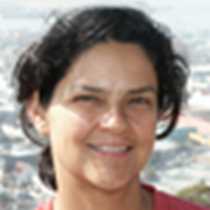Boca de la Soledad & the Dunes of Magdalena Island
Dawn patrol for Gray whale watching was a perfect way to start the day at the Northern mouth of Bahia Magdalena: “Boca de la Soledad.” On board our Zodiacs we headed towards the mouth when “Blow!” someone shouted, followed by another blow, and another, and a mother and calf pair!
It’s almost impossible to think that one can be surrounded by blows of a whale that had an endangered status until just 15 years ago due to extensive hunting in the 19th Century. Mexican and International Laws acted just in time in 1946 to allow the recovery of the Gray whale. In 1994 it was taken off the Endangered Species List and scientists have calculated that the population has gone back to the pre-hunting numbers of around 20,000 individuals. In spite of a long hunting era in these calving lagoons, the gentle leviathans* allow us to follow them closely. They arrived here in January and many of them already have had their calves. After three months in the lagoons, the calves would have increased their layer of blubber and they will be ready to start the long migration towards their feeding ground in the cold and productive waters of northern Alaska and the Chukchi Sea.
The “Pangueros,” our local guides from the adjacent town of Adolfo Lopez Mateos, that take us out through the shallow sandbars into the Boca de la Soledad to see the whales, will go back to their regular fishing endeavors and the lagoons will look different without these gentle giants around.
We kept admiring them for the allotted time we had in our Zodiacs rotation, sometimes being surprised by the sudden lifting of part of their body above the water in a “breach” or the slow motion vertical lifting of their giant head in a “spy-hopping” position. Some others surprised us by surfacing to breathe so close to our boats that we were sprayed by their exhalation. No complaints!
After the morning Zodiac rounds we went for one more hike in the dunes of Magdalena Island, where we had the opportunity to learn more about the dune plants, go for a stroll in the beach or jump around in the dunes!
After lunch we started afternoon rounds for more whale watching. We had another wonderful opportunity to get a closer look and a great sensation at being close to the whales. The group that waited for their rotation could either whale watch from the National Geographic Sea Bird, or learn more about the islands we will visit as Adrian gave an illustrated talk on “Islands of the Baja California Peninsula.”
To wrap up the day, we had a Mexican Fiesta. The Galley spoiled us once more with a fantastic buffet of Mexican selections and a trío from Adolfo Lopez Mateos delighted us with their songs and music.
For sure tonight we will have dreams of dances with whales!
Dawn patrol for Gray whale watching was a perfect way to start the day at the Northern mouth of Bahia Magdalena: “Boca de la Soledad.” On board our Zodiacs we headed towards the mouth when “Blow!” someone shouted, followed by another blow, and another, and a mother and calf pair!
It’s almost impossible to think that one can be surrounded by blows of a whale that had an endangered status until just 15 years ago due to extensive hunting in the 19th Century. Mexican and International Laws acted just in time in 1946 to allow the recovery of the Gray whale. In 1994 it was taken off the Endangered Species List and scientists have calculated that the population has gone back to the pre-hunting numbers of around 20,000 individuals. In spite of a long hunting era in these calving lagoons, the gentle leviathans* allow us to follow them closely. They arrived here in January and many of them already have had their calves. After three months in the lagoons, the calves would have increased their layer of blubber and they will be ready to start the long migration towards their feeding ground in the cold and productive waters of northern Alaska and the Chukchi Sea.
The “Pangueros,” our local guides from the adjacent town of Adolfo Lopez Mateos, that take us out through the shallow sandbars into the Boca de la Soledad to see the whales, will go back to their regular fishing endeavors and the lagoons will look different without these gentle giants around.
We kept admiring them for the allotted time we had in our Zodiacs rotation, sometimes being surprised by the sudden lifting of part of their body above the water in a “breach” or the slow motion vertical lifting of their giant head in a “spy-hopping” position. Some others surprised us by surfacing to breathe so close to our boats that we were sprayed by their exhalation. No complaints!
After the morning Zodiac rounds we went for one more hike in the dunes of Magdalena Island, where we had the opportunity to learn more about the dune plants, go for a stroll in the beach or jump around in the dunes!
After lunch we started afternoon rounds for more whale watching. We had another wonderful opportunity to get a closer look and a great sensation at being close to the whales. The group that waited for their rotation could either whale watch from the National Geographic Sea Bird, or learn more about the islands we will visit as Adrian gave an illustrated talk on “Islands of the Baja California Peninsula.”
To wrap up the day, we had a Mexican Fiesta. The Galley spoiled us once more with a fantastic buffet of Mexican selections and a trío from Adolfo Lopez Mateos delighted us with their songs and music.
For sure tonight we will have dreams of dances with whales!




